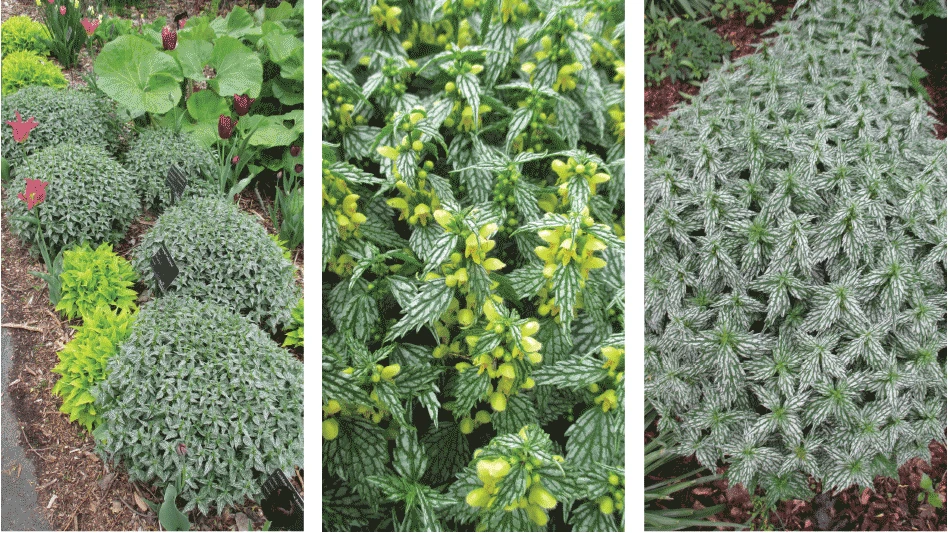

damaged by oleander aphids.
Integrated pest and pollinator management (IPPM) is an approach to pest management that prioritizes pollinator conservation alongside the production and maintenance of healthy plants.
The evidence is clear that insect pollinators like bees and butterflies are declining around the globe. As the vegetation of urban and residential settings, ornamental plants have a massive opportunity to help combat pollinator decline. Unfortunately, conserving pollinators often comes with higher costs in the form of labor and management inputs. Thus, balancing cost-effective pest management with conservation goals can be tricky.
While many customers are willing to pay more for pollinator-friendly plants, keeping costs low is a top priority for growers and the best practices for pollinator plant production are unclear. Our goal is to ensure that, given these challenges, the plants reaching the shelves are, indeed, pollinator-friendly.
Understanding the risks
Pests do not discriminate between pollinator-friendly plants and those that do not support pollinators. Pests can reduce the quality of a plant for pollinators. Growers need to effectively manage key plant pests to produce healthy, saleable plants.
It is an unfortunate truth that many of the insecticides used for pest management pose some level of risk to pollinators. The most widely used insecticides are broadly insecticidal, meaning that they can have toxic effects on both beneficial insects like pollinators as well as pests. Insecticides can outright kill pollinators of course, but sublethal effects are also a concern. For example, some insecticides may not be immediately lethal but can reduce the ability of bees to produce new queens or forage for food, which can have serious negative effects on local pollinator populations.
Most people are not spraying insecticides targeting bees and butterflies. However, many of the most effective insecticides are systemic and show up in various plant parts. Thus, consumption of insecticide-contaminated plant material is the main way that pollinators are exposed to insecticides. Bees are at risk of insecticide exposure from consuming contaminated nectar and pollen gathered from the flowers of treated plants. Many pollinator-friendly ornamentals are popular because they are host plants for butterflies. Butterflies and moths are more challenging to protect because they may consume contaminated nectar as adults but also leaf material as caterpillars. Since most key pests also feed on leaf material, this can create a conflict between controlling foliage-feeding pests and foliage-feeding butterflies.

host to the cassius blue butterfly caterpillar.
Choosing the right insecticide
One of the most important decisions in IPPM is which insecticide to use. Some chemistries are inexpensive and widely available (e.g., pyrethroids and generic neonicotinoids), making them popular choices for protecting plants and minimizing production costs. However, this protection can come with added biological and environmental costs. For example, there are well-documented negative effects of multiple neonicotinoids on pollinators, making them largely incompatible with IPPM.
Alternatively, many growers use low-impact or reduced-risk insecticides, which are generally more compatible with pollinators and other non-target organisms, including the applicator. These products are designed to be highly selective for the target pest. However, they can also be much more expensive than their industry standard counterparts. Low-impact insecticides such as insecticidal soap may reduce non-target impacts on pollinators but can require more frequent applications to suppress pest populations, which can further increase the cost of production.
Although low-impact and reduced-risk products are a great starting point, it is also a best practice to review the product label to see what pests it targets. For example, if managing pests on a pollinator-friendly host plant for butterfly larvae (think milkweed), you would want to avoid any products that are labeled to control caterpillar pests like fall armyworm or tent caterpillars. This absolutely does not guarantee safety for non-pest butterflies and moths, but it is a step in the right direction. Unfortunately, it further narrows the list of insecticide options for use on those plants in the context of IPPM.
Right insecticide, right time
Fortunately, there are ways to use both conventional and alternative insecticides to reduce risks to pollinators. Risks to bees and adult butterflies and moths can largely be managed by controlling or preventing blooms in the immediate period after treatment. This can be achieved by removing blooms and buds of flowering plants, or by covering the plant with netting to prevent pollinators from accessing the contaminated nectar and pollen. However, it remains unclear how long it takes for those flowers to be completely safe.
Another method to reduce exposure risk to adult pollinators is by adjusting treatments to maximize the amount of time between insecticide application and the next bloom period. Or, maximizing the time between insecticide application and when that plant may hit the retail market and get installed into a landscape. This allows for the insecticide to be taken up by the plant, suppress pest populations, and then dissipate, thereby reducing the likelihood of exposing pollinators to harmful insecticide residues. This method is particularly important when using insecticides with long residual activity, like neonicotinoids and other systemics.
Using insecticides without systemic activity can also be a viable alternative to reduce risks to pollinators, especially non-pest caterpillars of butterflies and moths. Insecticides that rely on contact and have short residual activity, like insecticidal soaps, horticultural oils and pyrethrins, can provide quick knockdown of pests while having only a brief period of risk to caterpillars and adult pollinators, provided plants are not sprayed while in bloom. Plants treated with these insecticides can be safe for pollinators in as little as a few days or weeks, depending on the product.

host for this species.
Final thoughts
One final note to remember is that not all plants attract the same pollinators, and some plants do not attract pollinators at all. Common ornamental plants like boxwood that are grown primarily for greenery may not bloom depending on how frequently they are pruned. Other ornamentals like snowball hydrangeas have sterile flowers that do not provide nectar or pollen for pollinators to feed on. Nearly all foliage plants like Monstera or Ficus commonly used indoors do not flower and even if they do, are not accessible to pollinators. When dealing with pests on these types of plants, it can be ok to use insecticides and treatment timings not advisable for pollinator-attractive plants.
Unfortunately, there is no “one size fits all” or even “one size fits most” approach to IPPM. Each grower must carefully balance customer desires, tolerance for increased production costs, local regulations, and the potential environmental costs of their actions to craft a pest management plan that best suits the nursery and the specific plants and pests in question. For the most up-to-date information on IPPM practices in your region, contact your local extension office and learn what you can do to protect pollinators in ornamental landscapes.
Get curated news on YOUR industry.
Enter your email to receive our newsletters.
Explore the August 2023 Issue
Check out more from this issue and find your next story to read.
Latest from Nursery Management
- NewGen Boxwood added to Proven Winners ColorChoice line
- Terra Nova releases new echinacea variety, 'Fringe Festival'
- American Horticultural Society names winners of 2025 AHS Book Awards
- Nufarm announces unified brand
- American Horticultural Society announces winners of 2025 Great American Gardeners Awards
- Shifting the urban environment
- The Growth Industry Episode 3: Across the Pond with Neville Stein
- What's in a name?







